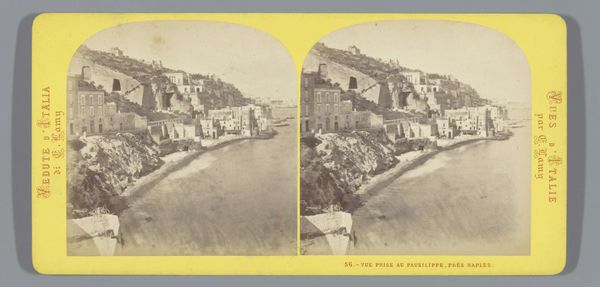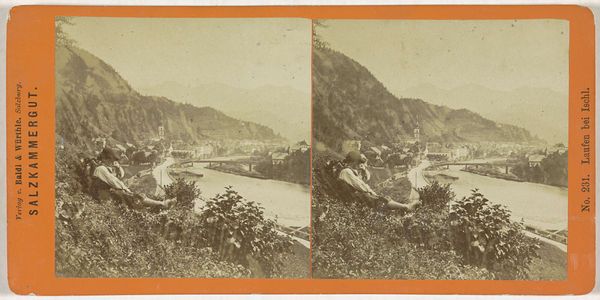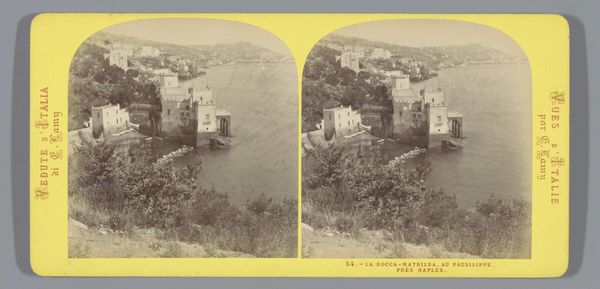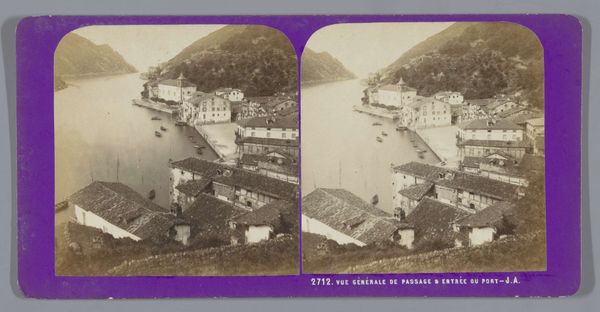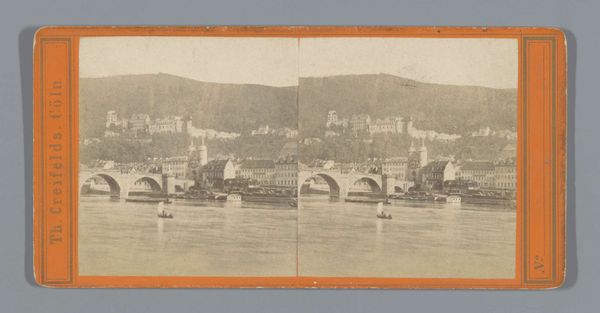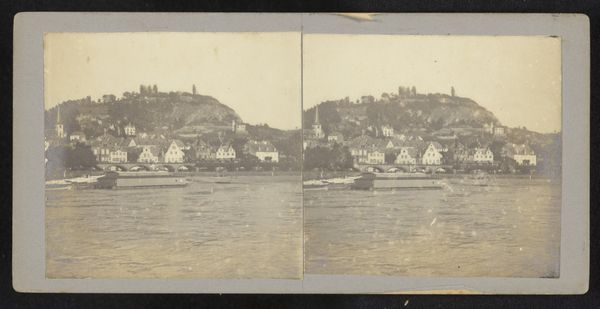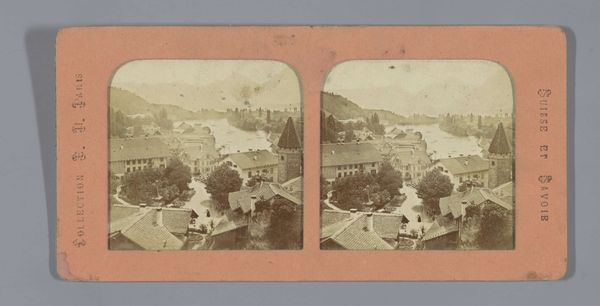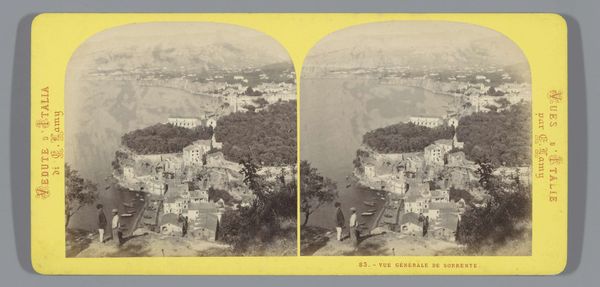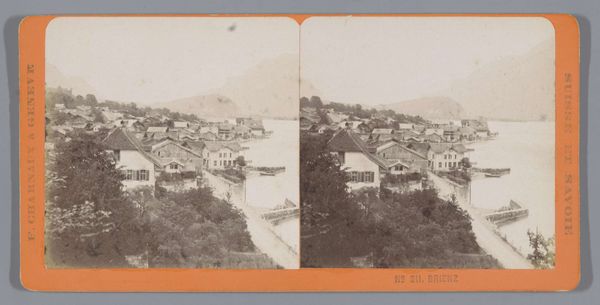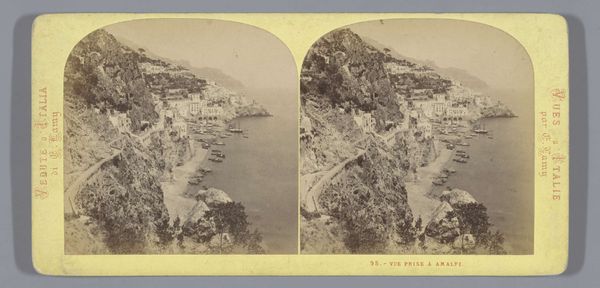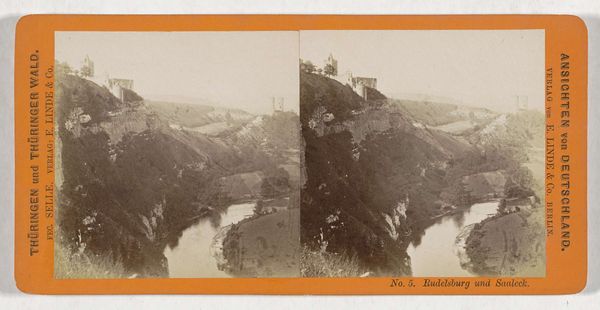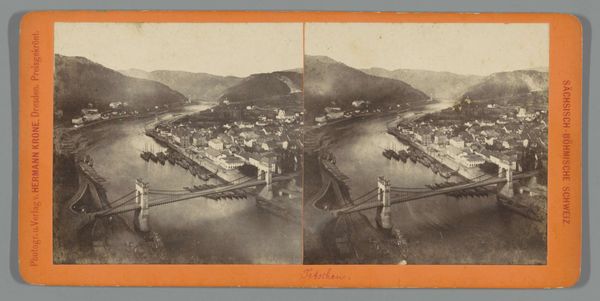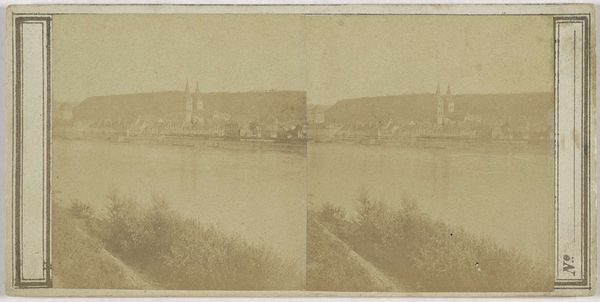
photography
#
water colours
#
landscape
#
photography
#
coloured pencil
#
cityscape
Dimensions: height 85 mm, width 170 mm
Copyright: Rijks Museum: Open Domain
Curator: The initial feeling I get is one of meticulous stillness, an almost staged, peaceful quality. The subdued palette emphasizes that. Editor: Agreed, there is a quietude to the scene. Let's consider "Gezicht op Thun," a stereoscopic cityscape created by Florentin Charnaux after 1873. This is a photographic work augmented with colored pencil and watercolors, producing this tonality. Curator: I'm particularly intrigued by Charnaux's deliberate layering of mediums, and how this challenges the notion of photography as purely a mechanical form of reproduction. He intervenes manually in the process, which moves this work beyond a simple depiction and introduces the artistry inherent to crafted photographic pieces. It’s no mere capturing of a place, it’s a manual construction using the apparatus. Editor: It speaks to how art serves ideological purposes. Here, the selection and framing offer a view of civic stability—emphasizing order. The serene cityscape seems detached from any form of labor or social issues. It focuses, consciously or not, on an idyllic facade of the era that arguably papers over its underbelly. Curator: That reading is valid. However, I see Charnaux less as consciously obscuring realities, and more drawn to a pursuit of novel approaches using readily available technology of that moment to produce captivating scenic images for growing tourist markets. It is a beautifully crafted photograph that speaks volumes to contemporary photographic production trends in that time. The addition of watercolor and colored pencil is an overt gesture of making—labor in the photographic arts. Editor: A tourist’s gaze has political consequence; consumption, selection, and emphasis are forms of asserting and preserving certain positions, which is why critically investigating all aesthetic decisions is essential. The picturesque framing and careful colouring amplify the feeling of sublime beauty that may unintentionally overlook the everyday struggles of inhabitants within this beautiful cityscape. Curator: Ultimately, Charnaux’s meticulous artistry serves not only to elevate the status of photographic art, but shows us the labor involved in crafting an image—literal and conceptual—while subtly revealing the intersection of landscape, labour, and burgeoning touristic views. Editor: It truly illustrates how photography can engage in complex ways with representations, and, through thoughtful deconstruction, spark an insightful conversation regarding place and power dynamics.
Comments
No comments
Be the first to comment and join the conversation on the ultimate creative platform.
